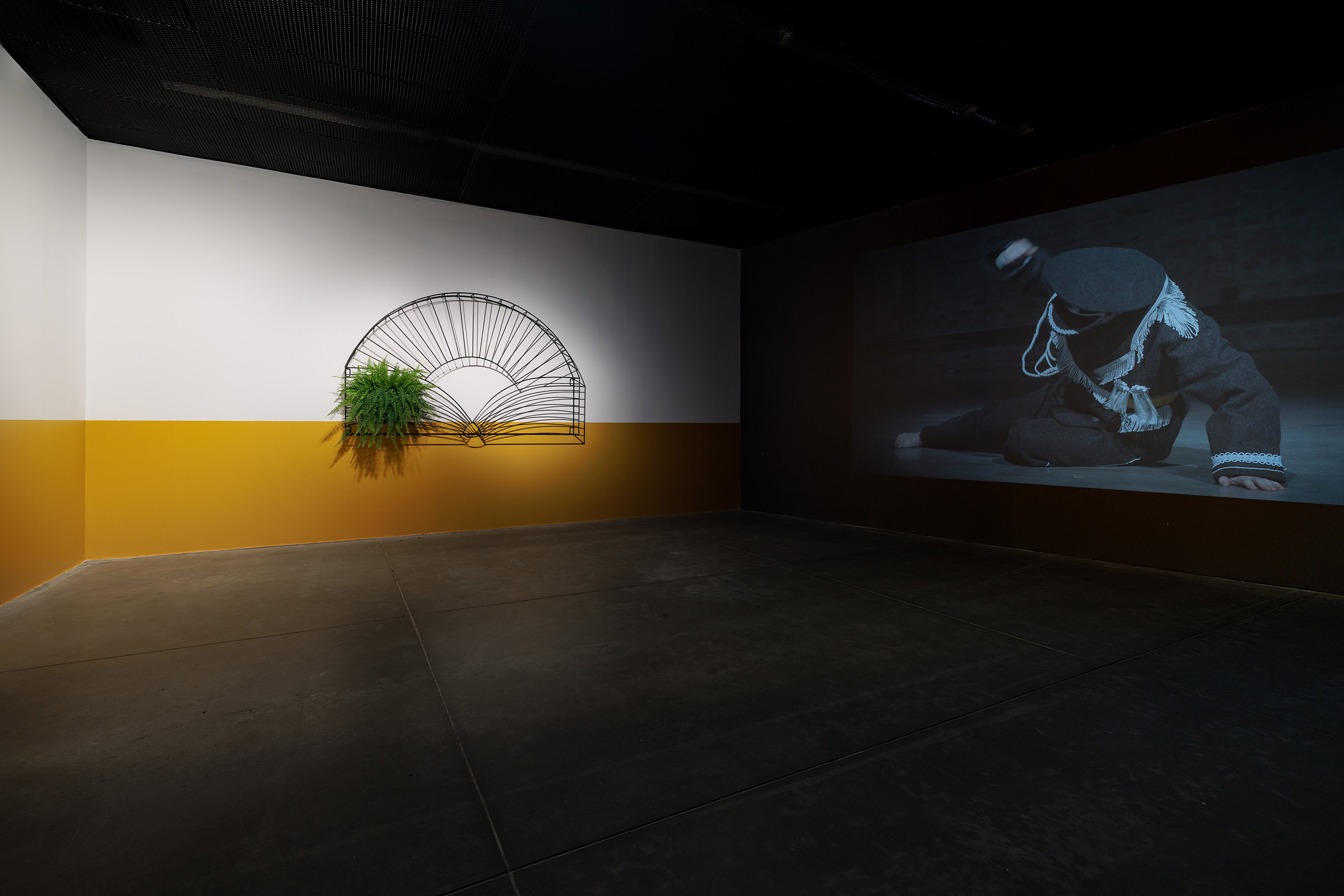The Rite of Fall
Solo exhibition: october-december, 2024
Cricoteka (Cloakroom 2024), Kraków, Poland
Curator: Kamil Kuitkowski
Text: Kamil Kuitkowski
Photo: Szymon Sokołowski


The title of Ala Savashevich’s exhibition is a reference to The Rite of Spring by Igor Stravinsky. However, by using the homonymous nature of the word fall, which means both a season of the year and an act of collapsing, she moves towards completely different ways of reading Stravinsky’s work. The more so that Savashevich’s exhibition is based on her own version of The Rite of Spring, a camera-recorded performance during which, dressed in a felt costume modeled on Alexander Lukashenka’s parade uniform, she did the death dance, as choreographed by Nijinsky, on a theater stage.
In that performance, she played with Stravinsky and Nijinsky through a number of repeats and reworks of their play, but also made references to Chaplin’s The Great Dictator and, in a sense, to Tadeusz Kantor. She showed that times when art— for instance Katarzyna Kozyra’s The Rite of Spring—could deal mainly (although this is an oversimplification) with the body and the gender have passed due to the need to comment on great historical narratives and to resist the destructive force of new dictators.
In that performance, she played with Stravinsky and Nijinsky through a number of repeats and reworks of their play, but also made references to Chaplin’s The Great Dictator and, in a sense, to Tadeusz Kantor. She showed that times when art— for instance Katarzyna Kozyra’s The Rite of Spring—could deal mainly (although this is an oversimplification) with the body and the gender have passed due to the need to comment on great historical narratives and to resist the destructive force of new dictators.


Functioning on the touching point between Polish and Belorussian cultures at the time of a tragedy unveiling on the border between the two countries and the war in Ukraine (and the one in the Middle East, too), the artist performs Nijinsky’s exhausting final routine from The Rite of Spring. At the end, she neither dies nor is reborn. She marches to outside of the camera view. The whole gig is repeated again and again, just like some phenomena always come back throughout history.
At The Rite of Fall exhibition, a projection of Savashevich’s The Rite of Spring will be a part of an installation made using elements typical of Eastern European power and oppression systems—heavy drapes and oil-painted wall trim—and an item created specifically for the purpose of the exhibition that refers to the artistic metalwork placed in public spaces in the Soviet Union for propaganda reasons. Thanks to this context, Savashevich’s work refers, among other things, to the “school” origin of uniforms and the formative nature of education that replicates violence, at the same time noticing, similarly to Kantor, that childhood is the time in which the beginnings of contemporary nightmares are rooted.
At The Rite of Fall exhibition, a projection of Savashevich’s The Rite of Spring will be a part of an installation made using elements typical of Eastern European power and oppression systems—heavy drapes and oil-painted wall trim—and an item created specifically for the purpose of the exhibition that refers to the artistic metalwork placed in public spaces in the Soviet Union for propaganda reasons. Thanks to this context, Savashevich’s work refers, among other things, to the “school” origin of uniforms and the formative nature of education that replicates violence, at the same time noticing, similarly to Kantor, that childhood is the time in which the beginnings of contemporary nightmares are rooted.